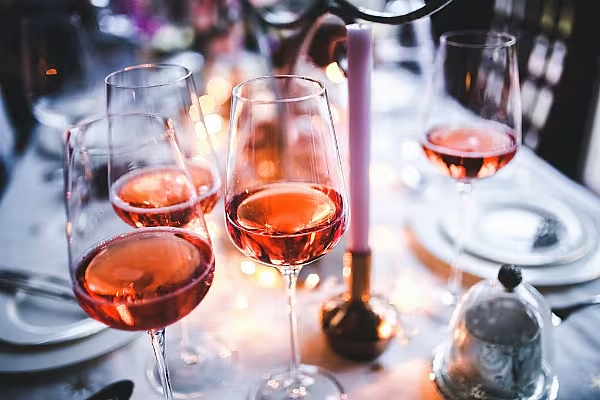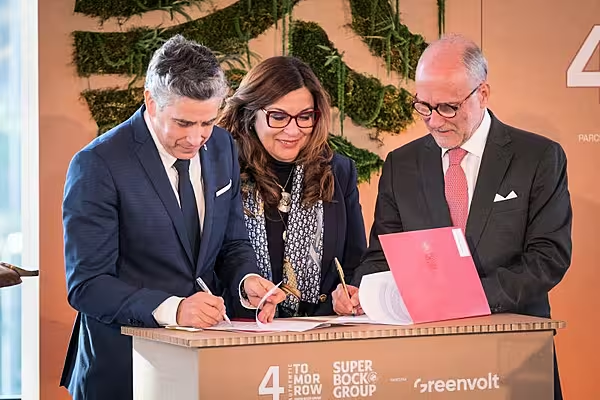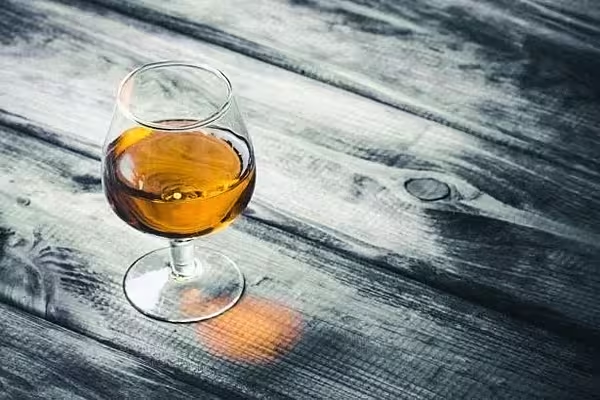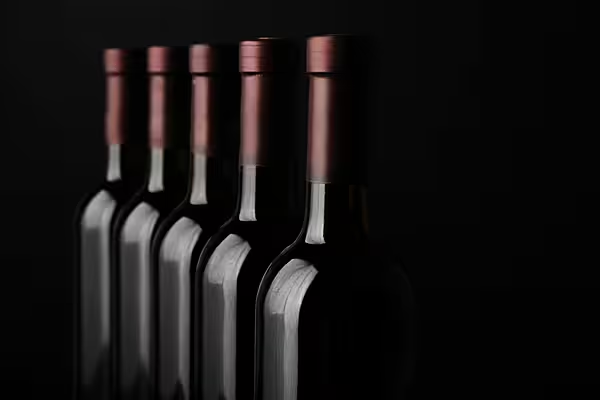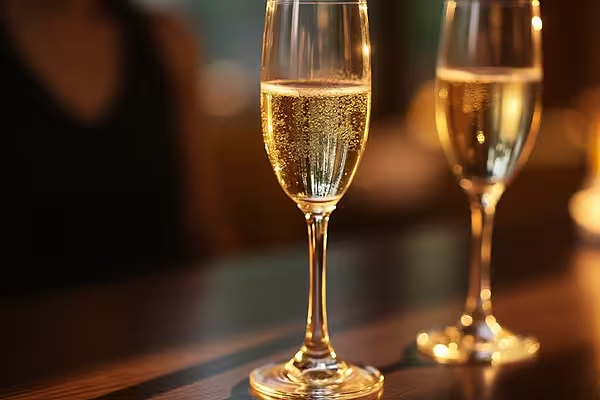Rosé has evolved into the most clichéd of beverages: it’s a drive-thru, a pool party, a hashtag. At the same time, it's become one of the most powerful forces in the beverage category. It’s now a third channel of revenue for wine makers, retailers, and distributors, elbowing its way alongside the traditional categories of red and white.
“There’s been a decoupling of rosé from the rest of wine; its own alcohol category,” says Rodolphe Boulanger, vice president of beer, wine, and spirits at Fresh Direct, an online grocer based in the Northeast US with sales somewhere just south of $1 billion. When Boulanger joined Fresh Direct in 2014, four lonely rosés were for sale. That number leapt to 25 in 2015 and 45 in 2016. When Boulanger sent out a request for samples earlier this year, he was taken aback by what came in.
“The level of innovation and new product launches surprised us,” he says. Today the ecommerce grocer has more than 90 rosés in its assortment. One of its most popular is Maris, a canned organic wine from France.
Category Growth
In January, Nielsen reported that the rosé category (including sparkling and still) had reached a valuation of $389 million annually. Still rosé is up more than 57% over the last 52 weeks, outpacing the overall category of wine, which is growing at a rate of a little more than 2%. That’s more than each of Riesling, Zinfandel, White Zinfandel, Malbec, or Syrah/Shiraz. In terms of volume, still rosé is up 40%.
And while everyone is cheering for craft beer, the past five years in sales show that consumers are spending more on wine and spirits. Goldman Sachs even downgraded some of the biggest beer producers due to sluggish sales, as reported by CNBC.
While rosé is growing by leaps and bounds, beer grew only 0.6% in terms of dollars, and was down a fraction of a percent in terms of volume. (But to keep it in context, beer is a $37 billion business annually. Rosé is about one percent of that. Even red and white wine are vastly bigger – at $5.8 billion and $7.1 billion in annual sales, respectively.) As rosé moves into new, summer-friendly formats like cans, boxes, and even 40-oz bottles, it is being marketed heavily to millennials as an alternative to beers on the beach or by the grill.
Production
Many consider France to be the epicentre of rosé production, with Provence accounting for 42% of that, but Spain is close behind at No. 2, and the US is third in rosé production. While general wine consumption has remained stable in absolute terms, consumption of rosé has increased 20% since 2002, with the US and France accounting for nearly half of worldwide demand, according to Conseil Interprofessionnel des Vins de Provence (CIVP).
The craze for all things pink (which applies to sneakers and dresses, too) has resulted in the highly quaffable wine being made everywhere, even in such unlikely locales as Japan and Morocco. “Really serious makers are using their precious treasured grapes to make pink,” says Belinda Chang, a James Beard award-winning sommelier. “There are hundred-dollar bottles on lists. People are collecting rosés now,” she says.
Then there’s the straight-out innovation that’s relatively unheard of in the rest of the wine industry: Besides cans of all sizes and bottles with glass tops, there are bottles with etched bottoms and in shades to match every stick of Crayola.
“It’s probably one of the only wines that comes in a clear bottle so you can marvel at its colour,” says Andre Mack, winemaker and owner of Oregon’s Mouton Noir Wines, which sold 5,000 cases of a single rosé called Love Drunk. When he first made it in 2010, it was a hard sell.
“The problem with rosé is that it’s labeled a seasonal thing, so you try to make the right amount,” he says. “No one wants to be caught with last year's rosé.” Because he was one of the first out of the gate on the West Coast, Mack had to scale back at first. When the wine officially became a hit, he allocated more grapes back to rosé production. Next year he’s on track to make 8,000 cases.
But for Lorena Ascencios, wine buyer at Astor Wines & Spirits, New York’s largest wine retailer, oversights like this can be a good thing. “Typically I try to buy really tight,” says Ascencios. “But a few years ago I had too much leftover, and people kept buying it. I realized it wasn’t a mistake.” Astor sells around three thousand cases of rosé annually, well into December and January. This year it ran a promotion on Mother’s Day on full cases of rosé. It performed so well Astor will be doing it again next year.
It has become unavoidable for even elite brands to ignore. After watching the category expand five times as fast as the total wine category, Moët Hennessy Estates & Wines added two dry rosés to its list, Cape Mantelle from Australia and Smoke Tree from Sonoma.
Rosé Season
If you live in the Northeast of the US, you’re probably familiar with Wolffer Estate Vineyard, which has been making rosé since 1992, ever since winemaker Roman Roth arrived and took one look at the cool climate of Long Island and thought: rosé. The following year he bottled 82 cases. This year the vinyard sold out of almost 50,000 cases, an increase of 20% over the previous year, but sold 30% faster. That number includes a new premium vintage from Argentina and Summer in a Bottle, a Long Island rosé that sold out right after July 4. “Every year we would have 40–50% sales increases, where you couldn’t make enough,” laughs Roth.
That has coincided with the extension of the rosé season, which, like white pants, used to fold up after Labor Day. “But each year we see a shoulder season going stronger and stronger. This year in April our sales were up 64%, and May was up 50% over the year prior,” says Boulanger of his Fresh Direct sales.
The fanaticism surrounding the beverage goes full circle. Consumers will try new bottles in hopes of discovering the next Whispering Angel, existing brands are adding on rosé extensions, and retailers are rushing to create private-label versions to sell at a better return.
A Boston wine company and club, 90+ Cellars, says its rosé portfolio is up 70% year over year, an increase unmatched by its red and white selections. The brand is working to cement its place in rosé vernacular with sold-out rosé cruises hosted in Boston, Chicago, and New York. Chief Executive Officer Kevin Mehra says the overwhelming popularity is because rosé is unpretentious in the world of wine. “It hits the spot every time,” he says. “Rosé is not meant to be an elitist drink. We drink rosé like its Bud Light.”
Should you prefer your pink drink to be more land-based, there’s a rosé camp that you can attend, also sponsored by 90+ Cellars.
Even Kosher drinkers are flocking to rosé. In 2015, Royal Wine Corporation, the leader in Kosher wine and beverages, had nine rosés in its assortment. Today it has 25. Sales have tripled over the past two years in rosé alone, an increase of 89%, or 10,000 cases.
But some in the industry say rosé has to have a limit. While Jason Smith, executive director of wine for MGM Resorts International in Las Vegas, has seen rosé increase 16% across the company, it is still a miniscule portion of the company’s total wine volume. “I don’t know how much more it’s going to grow. I don’t think it’s going to make a huge impact on our bottom line,” says Smith.
The wine buyer at Astor agrees that it’s a fad. “I think it will last a few more years, and then it will slow down,” says Ascencios, pointing to earlier waves of popularity that have since petered out. Once upon a time, she notes, litre bottles of Grüner Veltliner, a white wine grape from central Europe, were the hot commodity.
News by Bloomberg, edited by ESM. Click subscribe to sign up to ESM: The European Supermarket Magazine.
